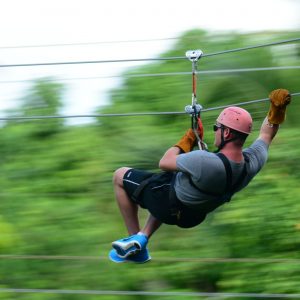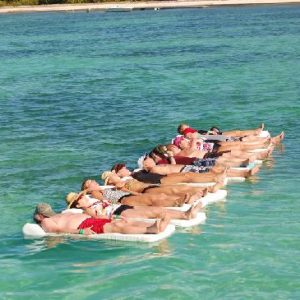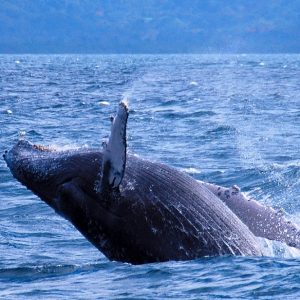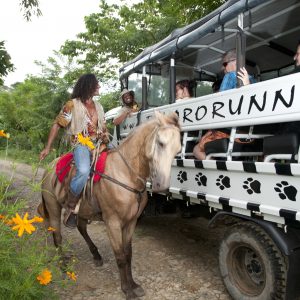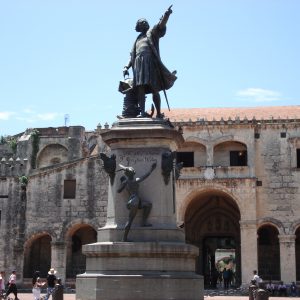The Dominican Republic, the treasure of the Caribbean
 Geographic location
Geographic location
The Dominican Republic (Spanish: República Dominicana) is a Latin American country located in the Greater Antilles archipelago on the Caribbean island of Hispaniola
.
It shares a border with the Republic of Haiti, making it one of two Caribbean islands that are split by two countries; the other is Saint Marteen.
Hispaniola
is the second-largest of the Greater Antilles islands, and lies west of Puerto Rico and east of Cuba and Jamaica.
More than 500 years of mixed lapses of prosperity and turmoil give this island-nation the longest historical record of any of the other country in the Western hemisphere: The Dominican Republic is the site of the first permanent European settlement in the Americas and became the first point of colonization in the Western Hemisphere by explorers from Europe.
The Dominican Republic has the first cathedral and university, as well as the first European-built road and fortress, in the Americas. Santo Domingo (originally New Isabela) was also the first colonial capital in the Americas.
History
The island of Hispaniola
, of which Haiti occupies the western third, was originally inhabited by the Taíno Arawak people. Christopher Columbus landed at Môle Saint-Nicolas on December 5, 1492, and claimed the island for Spain. Nineteen days later, the Santa Maria ran aground near the present site of Cap-Haitien; Columbus was forced to leave 39 men, founding the settlement of La Navidad. Keiskeya is often misspelled as Quiesqueya
, a name that was used by its early inhabitants, the Taíno-Arawak people.
The Taínos were a seafaring branch of the South American Arawaks. Taíno means the good
or noble
in their language. A system of cacicazgos (chiefdoms) existed on Hispaniola; Marien, Maguana, Higuey, Magua and Xaragua.
One of the earliest leaders to fight off Spanish conquest was Queen Anacaona, a Taíno princess from Xaragua who married Chief Caonabo, a Taíno chief (cacique) from Maguana. The two fought hard against the Europeans; she was captured by the Spanish and executed in front of her people. Other noted Taíno leaders from Hispaniola are Chief Guacanagari, Chief Guama and Chief Hatuey (who later fled to Cuba and helped fight the Spaniards there). Cacique Henri, another Taíno chief, fought victoriously against the Spaniards in the Bahoruco to gain freedom for himself and his people.
The town associated with this history is Anse a Pitres, near the south-eastern town of Jacmel. The Taínos as the Europeans saw them on the island of Hispaniola are virtually extinct. The survivors that escaped death mixed with African slaves (runaways called maroons), producing a small generation of zambos. The mestizo increased in number as native women conceived to European men.
The Taïno bloodline in Hispaniola diluted more and more as the decades went by primarily due to the establishment of Africans and mulattos on the island; however, it is believed that a small number of Haitians and Dominicans retain some native ancestry.
For much of the twentieth century, the government of the Dominican Republic was unsettled and mostly non-representative. Since the death of military dictator Rafael Leónidas Trujillo in 1961, the Dominican Republic has moved toward representative democracy. Spanish lieutenant governor José Núñez de Cáceres declared the colony’s independence as the state of Spanish Haiti (Haití Español) on November 30, 1821, requesting admission to the Republic of Gran Colombia, but Haitian forces, led by Jean-Pierre Boyer, unified the entire island, ending 300 years of colonial domination and slavery just nine weeks later.
In 1838 Juan Pablo Duarte, founded a secret society called La Trinitaria that sought pure and simple independence of the eastern part of the island without any foreign intervention. Ramón Matías Mella and Francisco del Rosario Sánchez (the latter one being a mestizo), in spite of not being among the founding members, went on to be decisive in the fight for independence and are now hailed (along with Duarte) as the Founding Fathers of the Dominican Republic. On February 27, 1844, the Trinitarios declared independence from Haiti, backed by Pedro Santana, a wealthy cattle-rancher from El Seibo who became general of the army of the nascent Republic, and known as El Liberador
. The Dominican Republic’s first Constitution was adopted on November 6, 1844 which was modeled after the US constitution.
Re-establishment as a colony and Restoration War
In 1861, mainly due to political and economical reasons, then president Pedro Santana signed a pact with the Spanish Crown and reverted back the Dominican state to a colonial status, the only Latin American nation to do so. Haitian authorities, fearful of the reestablishment of Spain as colonial power, gave refuge and logistics to Dominican revolutionaries to re-establish the independence. The civil war was called the War of Restoration, and was led by two men: Generals Ulises Heureaux who was of Haitian origin (and 3 time President of the Dominican Republic) and Gregorio Luperón.
The War started on 1863 and, after two years of fighting, Spanish troops abandoned the island. The Restoration was proclaimed on August 16, 1865.
A few years later the Dominican Republic sought to sell itself to the United States and become a colony. The Dominican Republic offered the United States to take it over as a colony for 1.5 million dollars. President Grant supported this notion, but the United States Congress refused on June 30, 1870. President Grant thought that former American slaves could go to the Dominican Republic and live in peace and not be harassed by Southern whites.
U.S. Dominican Treaty for Assistance in Governing
In 1906, the Dominican Republic and the United States entered into a 50 year treaty giving control of its administration and customs to the United States. In exchange the United States agreed to help reduce the immense foreign debt that the Dominican Republic had established. In 1914, the United States, due to extreme political internal instability in the Dominican Republic (inability to elect a president), expressed concern and stated that a leader must be elected, or the United States would impose one. As a result, Ramón Báez Machado, was elected provisional president on August 27, 1914.
Presidential elections held on October 25 returned Juan Isidro Jimenes Pereyra to the presidency. Despite his victory, however, Jimenes felt impelled to appoint leaders and prominent members of the various political factions to positions in his government in an effort to broaden its support.
The internecine conflicts that resulted had quite the opposite effect, weakening the government and the President and emboldening Secretary of War Desiderio Arias to take control of both the armed forces and the Congress, which he compelled to impeach Jimenes for violation of the constitution and the laws. Although the United States ambassador offered military support to his government, Jimenes opted to step down on May 7, 1916.
Arias never assumed the presidency formally. The United States government, apparently tired of its recurring role as mediator, had decided to take a more direct action. By this time, U. S forces were occupying Haiti already. The initial military administrator of Haiti, Rear Admiral William Caperton, had actually forced Arias to retreat from Santo Domingo by threatening the city with naval bombardment on May 13, 1916.
The first Marines landed three days later, on May 19. Although they established effective control of the country within two months, the United States forces did not proclaim a military government until November. Most Dominican laws and institutions remained intact under military rule, although the shortage of Dominicans willing to serve in the cabinet forced the military governor, Rear Admiral Harry S. Knapp, to fill a number of portfolios with United States naval officers. The press and radio were censored for most of the occupation, and public speech was limited.
The surface effects of the occupation were largely positive. The Marines restored order throughout most of the republic (with the exception of the eastern region); the country’s budget was balanced, its debt was diminished, and economic growth resumed. Infrastructure projects produced new roads that linked all the country’s regions for the first time in its history.
A professional military organization, the Dominican Constabulary Guard, replaced the partisan forces that had waged a seemingly endless struggle for power. Most Dominicans, however, greatly resented the loss of their sovereignty to foreigners, few of whom spoke Spanish or displayed much real concern for the welfare of the republic.
The most intense opposition to the occupation arose in the eastern provinces of El Seibo and San Pedro de Macorís. From 1917 to 1921, the United States forces battled a guerrilla
movement in that area known as the gavilleros
. The guerrillas enjoyed considerable support among the population, and they benefited from a superior knowledge of the terrain.
The movement survived the capture and the execution of its leader, Vicente Evangelista, and some initially fierce encounters with the Marines. However, the gavilleros eventually yielded to the occupying forces’ superior firepower, air power (a squadron of six Curtis Jennies), and determined (often brutal) counter insurgent methods.
After World War I, public opinion in the United States began to run against the occupation. President Warren G. Harding, who succeeded Wilson in March 1921, had campaigned against the occupations of both Haiti and the Dominican Republic. In June 1921, United States representatives presented a withdrawal proposal, known as the Harding Plan, which called for Dominican ratification of all acts of the military government, approval of a loan of US $2.5 million for public works and other expenses, the acceptance of United States officers for the constabulary–now known as the National Guard (Guardia Nacional)–and the holding of elections under United States supervision.
Popular reaction to the plan was overwhelmingly negative. Moderate Dominican leaders, however, used the plan as the basis for further negotiations that resulted in an agreement allowing for the selection of a provisional president to rule until elections could be organized. Under the supervision of High Commissioner Sumner Welles, Juan Bautista Vicini Burgos assumed the provisional presidency on October 21, 1922. In the presidential election of March 15, 1924, Horacio Vásquez Lajara handily defeated Francisco J. Peynado. Vásquez’s Alliance Party (Partido Alianza) also won a comfortable majority in both houses of Congress. With his inauguration on July 13, control of the republic returned to Dominican hands.
1930 to 1980
The Dominican Republic was ruled by dictator Rafael Leonidas Trujillo (who was himself a quarter Haitian) from 1930 until his assassination in 1961. Trujillo ruled with iron hand, persecuting anyone who opposed his regime. He also renamed many towns and provinces after himself and members of his family, including the capital city Santo Domingo. In 1937 Trujillo, in an event known as the Parsley Massacre, ordered the Army to kill all Haitians on the Dominican side of the border; an estimated 17,000 to 35,000 Haitians were killed for approximately five days, from the night of October 2, 1937 through October 8, 1937, Haitians were cut down with machetes.
This massacre was alleged to have been an attempt to seize money and property from Haitians living on the border.As a result of this act of massacre the Dominican Republic agreed to pay Haiti $750,900.00, which was later reduced to US $525,000. The Dominican government headed by Trujillo for a time was supported by the USA, the Catholic Church and the Dominican elite; even after the death of Dominicans opposition and over 17,000 Haitians. Trujillo was assassinated on May 30, 1961 in Santo Domingo.
In 1965, US Marines arrived in the Dominican Republic to restore order in the civil war in Operation Powerpack, later to be joined by forces from the Organization of American States. They remained in the country for over a year and left after supervising elections, in which they ensured the victory of Joaquín Balaguer.
Balaguer remained in power as president for 12 years. His tenure was a period of repression of civil liberties, presumably to prevent pro-Cuba or pro-communist parties from gaining power in the country. Balaguer’s rule was accompanied by a growing disparity between rich and poor.
Modern times
In 1978, Balaguer was succeeded in the presidency by Antonio Guzmán Fernández. From 1978 to 1986, the Dominican Republic experienced a period of relative freedom and basic human rights. Balaguer regained the presidency in 1986, and was re-elected in 1990 and 1994, defeating José Francisco Peña Gómez (a former mayor of Santo Domingo). Both the national and international communities generally viewed these elections as a major fraud, leading to political pressure for Balaguer to step down.
Balaguer responded by scheduling another presidential contest in 1996, which was won by the Dominican Liberation Party for the first time, with Leonel Fernández as their candidate.
In 2000, Hipólito Mejía won the electorate when opposing candidates Danilo Medina and a very old Joaquín Balaguer decided that they would not force a runoff after the first got 49.8% of the votes. In 2004, Leonel Fernández was elected again with 57% of the votes, defeating then incumbent president Mejía, who was running for a second term.
Government and Politics
The government of the Dominican Republic is based mainly on that of the United States, thus the Dominican Republic takes place in a framework of a presidential representative democratic republic, whereby the President of the Dominican Republic is both head of state and head of government, and of a pluriform multi-party system. Executive power is exercised by the government. Legislative power is vested in two chambers of the National Congress.
The Judiciary is independent of the executive and the legislature, and is comprised of the Supreme Court of Justice, which functions as a Court of Cessation, several Courts of Appeals and many other tribunals in several matters: civil, penal, labor, administrative, lands, and family. The Law is derived from the French system.
Politics
The Dominican Republic is a a highly politicized country, with elections held every two years in both the presidential and the congressional levels. This favors the spending of millions of dollars in propaganda and campaign, and the expansion of clientelism, which has corrupted the system throughout the years.
There are many political parties and groups of interests, and new in this scenario, civil organizations. The three major parties are Reformist Social Christian Party (in power from 1966-78 and 1986-96); Dominican Revolutionary Party (in power in 1963, and from 1978-86, and again 2000-04); and the Dominican Liberation Party (in power from 1996 to 2000), currently official since 2004.
Provinces and municipalities
The Dominican Republic is divided into 31 provinces. Additionally, the national capital, Santo Domingo, is contained within its own Distrito Nacional. Please note that the names of provincial capital cities are provided in parentheses where they differ from the name of their respective provinces.
The provinces are divided into municipalities (municipios singular municipio). They are the second level political and administrative subdivisions of the country.
Geography
The Dominican Republic is situated on the eastern part of the second largest island in the Greater Antilles, Hispaniola. The Dominican Republic shares the island roughly at a 2:1 ratio with Haiti. The whole country measures an area of 44,442 km² making it the second largest country in the Antilles after Cuba. The country’s mainland has three mountain ranges, those being Cordillera Central (starting from Haiti towards east crossing the island), Cordillera Septentrional, and Cordillera Oriental in the East. In between the Central and Septentrional mountain ranges lies the rich and fertile Cibao valley. This major valley is home to the city of Santiago de los Caballeros and to most of the farming areas in the nation. The country’s capital and greatest metropolitan area, Santo Domingo, is located at the southern shore.
The Dominican Republic has the highest peak in the Caribbean named Pico Duarte(3,087 m / 10,128 ft above sea level) and the Biggest lake in the Caribbean named Lake Enriquillo.
The Dominican Republic has many rivers, including the navigable Soco, Higuamo, Romana (also known as ’Rio Dulce’), Yaque del Norte, Yaque del Sur, Yuna River, Yuma, and Bajabonico. The two largest islands near shore are Saona Island in the southeast and Beata Island in the southwest. To the north, at a distance between 100 and 200 km, are three extensive, largely submerged banks, which geographically are a southeast continuation of the Bahamas: Navidad Bank, Silver Bank and Mouchoir Bank. Navidad Bank and Silver Bank have been officially claimed by the Dominican Republic.
The Dominican Republic uses its rivers and streams to create electricity, and many hydro-electric plants and dams have been created on rivers, including the Bao, Nizao, Ozama, and Higuamo.
Climate
The country is a tropical, maritime nation. Wet season is from May to November, and periodic hurricanes between June and November. Most rain falls in the northern and eastern regions. The average rainfall is 1346 mm, with extremes of 2500 mm in the northeast and 500 mm in the west. The main annual temperature ranges from 21 °C in the mountainous regions to 25 °C on the plains and the coast. The average temperature in Santo Domingo in January is 25 °C and 30 °C in July.
Economy
The Dominican Republic is a lower middle-income developing country primarily dependent on natural resources and government services. Although the service sector has recently overtaken agriculture as the leading employer of Dominicans (due principally to growth in tourism and Free Trade Zones), agriculture remains the most important sector in terms of domestic consumption and is in second place (behind mining) in terms of export earnings. Tourism accounts for more than $1.3 billion in annual earnings. Free Trade Zone earnings and tourism are the fastest-growing export sectors. Remittances (remesas
) from Dominicans living abroad are estimated to be about $1.3 billion per year.
Following economic turmoil in the late 1980s and 1990, during which the GDP fell by up to 5% and consumer price inflation reached an unprecedented 100%, the Dominican Republic entered a period of moderate growth and declining inflation until 2002 after which the economy entered a recession. This recession followed the collapse of the second commercial bank of the country (Baninter), linked to a major incident of fraud valued at 3.5 billion dollars during the administration of President Hipolito Mejia (2000-2004).
The Baninter fraud had a devastating effect on the Dominican economy, with GDP dropped by 1% in 2003 while inflation ballooned by over 27%. The growth of the Dominican economy remains significantly hampered by an ongoing energy shortage, which causes frequent blackouts and very high prices.
Despite a widening merchandise trade deficit, tourism earnings and remittances have helped build foreign exchange reserves. The Dominican Republic is current on foreign private debt, and has agreed to pay arrears of about $130 million to the U.S. Department of Agriculture’s Commodity Credit Corporation.
According to the 2005 Annual Report of the United Nations Subcommittee on Human Development in the Dominican Republic, the country is ranked #71 in the world for resource availability, # 94 for human development, and #14 in the world for resource mismanagement. These statistics emphasize national government corruption, foreign economic interference in the country, and the rift between the rich and poor.
In the Trimestrial period of Jan-May 2007 the Dominican Economy experienced an exceptional growth of 9.1% in its GDP slightly lower than last years period by 1%. DR-CAFTA(trade agreement) and the Foreign Investment have been one that given great opportunity to the Dominican economy.
The Dominican Republic has become transshipment point for South American drugs to Europe as well as the United States and Canada. Money laundering is favored by Colombia via Dominican Republic for the ease of illicit financial transactions.
The Dominican Republic enjoys a growing economy with CIA World Fact book stating a 10.7% Real growth percentage in 2006 even though Inflation holds a 8.2% in the economy. Enjoying A GDP(PPP) per Capita of 8,400 a relative high in Latin America. Service and the Financial Sector has amounted for this growth in the economy while the Construction Sector makes a big part too of the GDP.
Santo Domingo, the capital of the Republic is the source of most of is GDP and has become one of the leading cities of the Caribbean along With San Juan, Puerto Rico.
Currency
The Dominican peso is the national currency of the country, although US dollars (USD) are acceptable in most tourist sites. The peso was worth the same as the USD at one time, but has recently decreased in value. The exchange rate in 1993 was 14.00 pesos per USD and 16.00 pesos in 2000, but it jumped to 53.00 pesos per USD in 2003. In 2004, the exchange rate was back down to around 31.00 pesos per USD.
The U.S. dollar is implicated in almost all commercial transactions of the Dominican Republic, supporting the theory that the devaluation of the peso in relation to the dollar in 2005 is the result of the international currency market; On February 2005, 1.32 USD = one € = 29 DR pesos; in October 2005, 1.19 USD = one € = 32 DR pesos.
The International Monetary Fund revealed a growth of 7.6% over the inflation index for 2006, which implies that the national currency of the Dominican Republic could finish the year with an average basis between 32.70 and touching the 40 pesos per dollar roof. Another factor that has an impact on the currency exchange market of the Dominican Republic is the fluctuation of the U.S. dollar on the international currency market. As of September 2007 the value of the peso is 1 USD=0.7006 EUR=33.430 DOP.
Demographics
According to the CIA World Fact Book, the ethnic composition of the Dominican population is, 73% of Mixed race, 16% White and 11% Black. Other ethnic groups in the Dominican Republic include Spaniards, Haitians, Germans, Italians, French, Jews, and Americans. A smaller presence of East Asians (primarily ethnic Chinese and Japanese) and Middle Easterners (primarily Lebanese) can be found throughout the population.
Culture
The culture of the Dominican Republic, like its Caribbean neighbors, is a blend of the European colonists, Taínos and African cultural elements. Castilian commonly known as Spanish, is the official language. Other languages such as Haitian Creole English, French, German, and Italian are also spoken to varying degrees. Haitian Creole is spoken fluently (Haitian nationals or of Haitian descent living in the DR and their children) by about 1.2 million people and is the third most spoken language after Spanish and English. European, African and Taíno cultural elements are most prominent in food, family structure, religion and music. Many Taíno names and words are used in daily conversation and for many items endemic to the DR.
Sports
Baseball is by far the most popular sport in the Dominican Republic today. After the United States, the Dominican Republic has the second-highest number of baseball players in the U. S. Major League Baseball. These include Sammy Sosa, Albert Pujols, Pedro Martínez, Vladimir Guerrero, David Ortiz, Jose Reyes, Manny Ramirez, Robinson Canó and Luis Castillo. Alex Rodriguez was born in New York to parents that emigrated from the Dominican Republic.
The Dominican Republic has participated in the Baseball World Cup winning Gold: 1 (1948), Silver: 3 (1942 1950 1952), and Bronze: 2 (1943 1969) right behind Cuba’s record of Gold: 25 (1939 1940 1942 1943 1950 1952 1953 1961 1969 1970 1971 1972 1973 1976 1978 1980 1984 1986 1988 1990 1994 1998 2001 2003 2005), Silver: 2 (1941 2007) and Bronze: 2 (1944 1951).
Historically, the Dominican Republic has been linked to the MLB since Ozzie Virgil, Sr. became the first Dominican to play there. Other very notable players were Juan Marichal, Bartolo Colón, Felipe Alou, Rico Carty, George Bell, and Stan Javier, among many others.
The Dominican Republic also has its own baseball league which runs its season from October to January (called The Winter League by MLB), and includes six teams: Tigres del Licey (Licey’s Tigers), Aguilas Cibaeñas (Cibao’s Eagles), Gigantes del Cibao (Cibao’s Giants), Toros Azucareros del Este (Eastern Sugar-Mill’s Bulls), Estrellas Orientales (Oriental Stars), and Leones del Escogido (Escogido’s Lions). Many MLB players and minor leaguers play in this six-team league during the off-season. As such, the Dominican winter league serves as an important training ground
for MLB.
Today there exists performance enhancing drug including steroids issue with athletes of the Dominican Republic.
Olympic gold medalist and world champion over 400 m hurdles, Felix Sanchez, and NFL Football player Luis Castillo both hail from the Dominican Republic. The 2007-2008 Caribbean Tournament(series) will be held in Santiago, Dominican Republic
From carnival to carnival, the closing of the festivities
Today the carnival of La Vega and tomorrow the National procession on the Malecón
The rich creativity of the masks and their baroque drawings characterizes the Dominican carnival.
The most colored, creative and merry festival that the people offer is the carnival.
This Saturday, La Vega, mistress of most famous and international Dominican carnival, will present its closing procession, in which will take part representations of carnivals of Aruba, Curaçao and Haiti, as well as groups of around fifty of Dominican localities, with the support of Luis Medrano Producciones.




National procession
As the carnival is the Carnival, beyond the wind of Lent, the inhabitants of the capital will have the pleasure, on the Malecón this Sunday, starting from 16h00, to see the national Procession, with a total of 130 groups and a great concert of merengue, which will be retransmitted on Telemicro, channel 5, thanks to the sponsor of the Presidente Beer.
The final point of the period of the festivals of the carnival, will count in addition to the groups, on the procession of the traditional figures of the people of the island, from which some are coming from the last centuries.
The habits of the Dominican people, the creativity exposed through the masks, the colored clothes, the popular rhythms, will be the actors of this large procession, which will summarize all the season which occurred these last weeks.
The most known carnival groups meet this weekend in the same setting for the official closing of the season 2008.
This year, the procession is dedicated to the lechones of Santiago.
As an integral part of its promotional platform for these festivals, and as its support for this traditional activity shows it, Cerveza Presidente will retransmit on line the procession, from the green zone Presidente, which is in the center of the carnival.
The event will be retransmitted by Telemicro, channel 5, starting from 16h00, and will be animated by Tania Báez, Jochy Santos, Pamela Sued, Milton Cordero (Lechuga) and Edgar Hernández.
Concert of merengue



New initiative of Presidente for this spectacular closing, a big concert of merengue and mambo will be given in the Malecón, by Tulile and Los Hermanos Rosario.
This one will take place in the Presidente podium, in crossing of the avenues George Washington and Máximo Gómez.
With this concert and the retransmission of the National Procession, Presidente closes in a formal way its platform of the carnival 2008, which offered to its consumers special offers during the month of February, and which revisited the most important carnivals of the country.
In addition to the Green Zones Presidente, a musical platform through which all the color and the freshness of the carnivals were taken along to some ones of the most attended bars of North and South zones was installed.
With the national procession, the Culture Ministry and the Dominican National Brewery formally close a season of carnival in which all the expressions and figures of these festivals were present.
With this platform, the name reaffirmed its engagement to the culture, the traditional festivals and events which draw the attention of the Dominican ones.
Tourism Dominican Republic
In its territory you can practice various sports
With only 48.442 square kilometers, the Dominican Republic has sufficient land and water to provide travel experiences extreme explorer uplifting and give often life meaning.
Underground, in the air, at sea, anywhere in the right space is causing some fresh air to city life, physical inactivity and starvation: hiking, climbing, diving, rafting, climbing, rappelling, jeeping, paragliding, canyoning or kiteboarding.
Today we locate these fantastic places that force us to take advantage of a country full of bold and risky choices.
Challenging nature
If the three thousand top 87 meters of Pico Duarte or reaching the valley of Tetero results way too little for the less adventurous, there are other similar options that make the mountaineering and trekking the unique experiences of explorers back to be better people, or pike, always depends.
The mountain’s 80 in Constanza, Loma Quita Espuela, in Duarte province, the slopes of Hoyo de Pelempito in the Sierra de Bahoruco and El Morro, Montecristi, can get anyone tired and challenge any body to go up to thesky.
For hiking and trekking, ecotourism experts recommend ways of Jarabacoa and San José de Ocoa for those who prefer a little steep and Saona Island for those who just want to walk and walk uprightly among green bushes, red crabs and black lauras monitoring the island’s Parque Nacional del Este.
In recent years, almost unexplored scenery in the center of this region are increasingly attracting visitors to walk, especially to the province of El Seibo.
An extreme sport to defy gravity
Rock climbing is still a trendy hobbie. It is the sporting pastime for many young people who see to feel that this challenge shows them the severity alive. The best routes to climb, they suggest, are the rugged mountains of Frontón beach in Samaná, a place known as Conde de Mana in San Cristobal and the Mirador Sur
park in Santo Domingo, ideal for those who are new to this adventure.The rappel, lower mountains or vertical walls using cables, helmets and harnesses, is in the vicinity of Rancho Baiguate in Jarabacoa, their best scenarios.
The bravest challenge water and slippery walls of the Falls of Limón and Jimenoa, something not recommended for beginners.The canyon between cliffs with slopes also practiced in the area of Jarabacoa, where Baiguate Rancho has built a sanctuary for the practice of almost all mountain extreme sports and other less risky.


